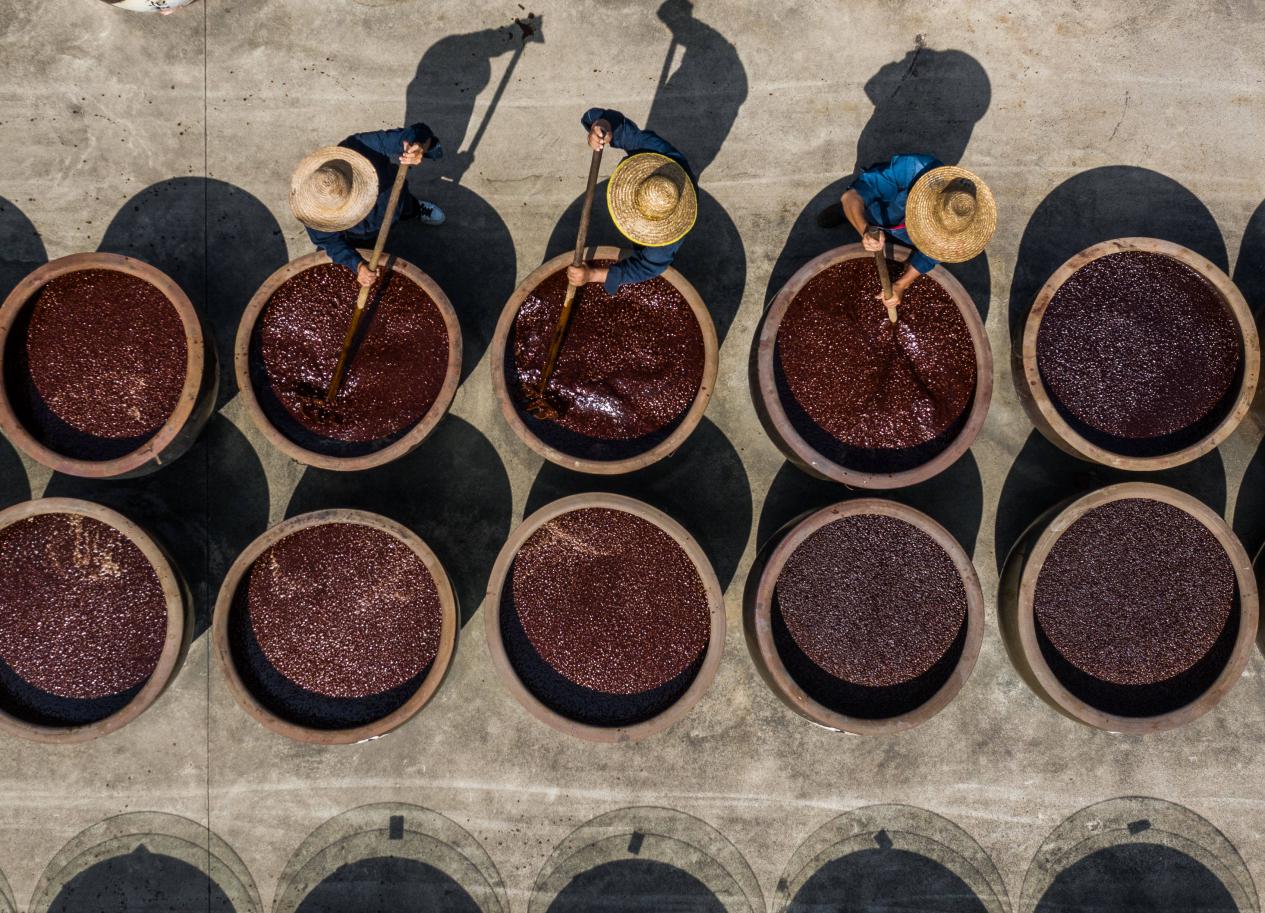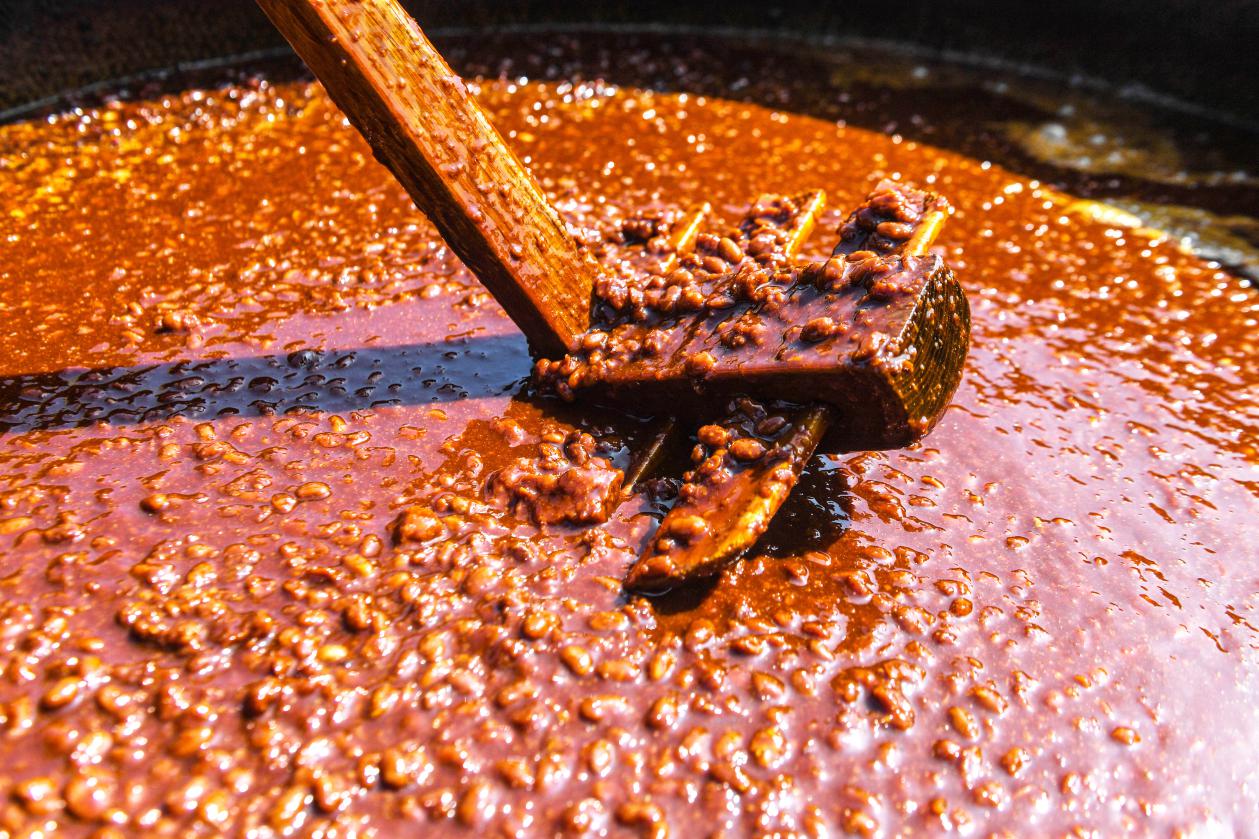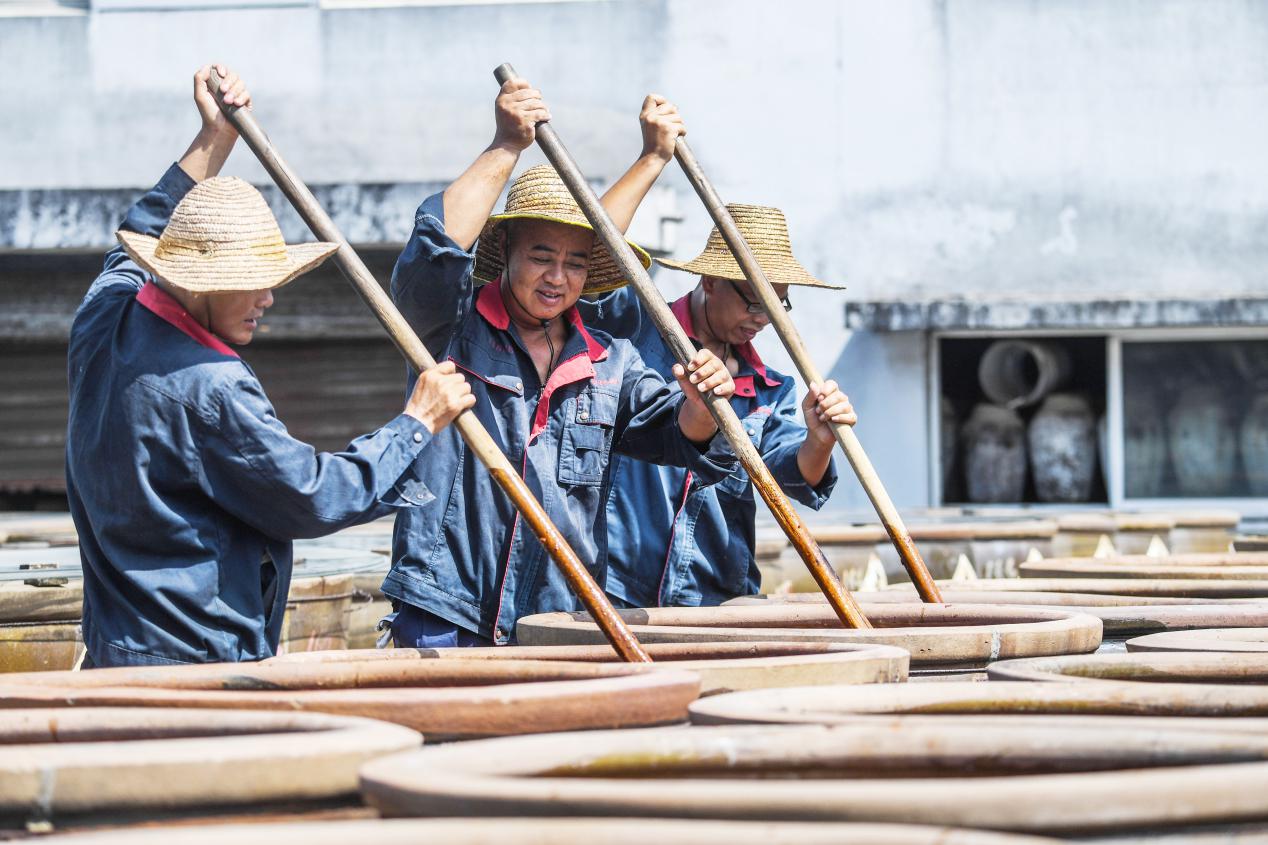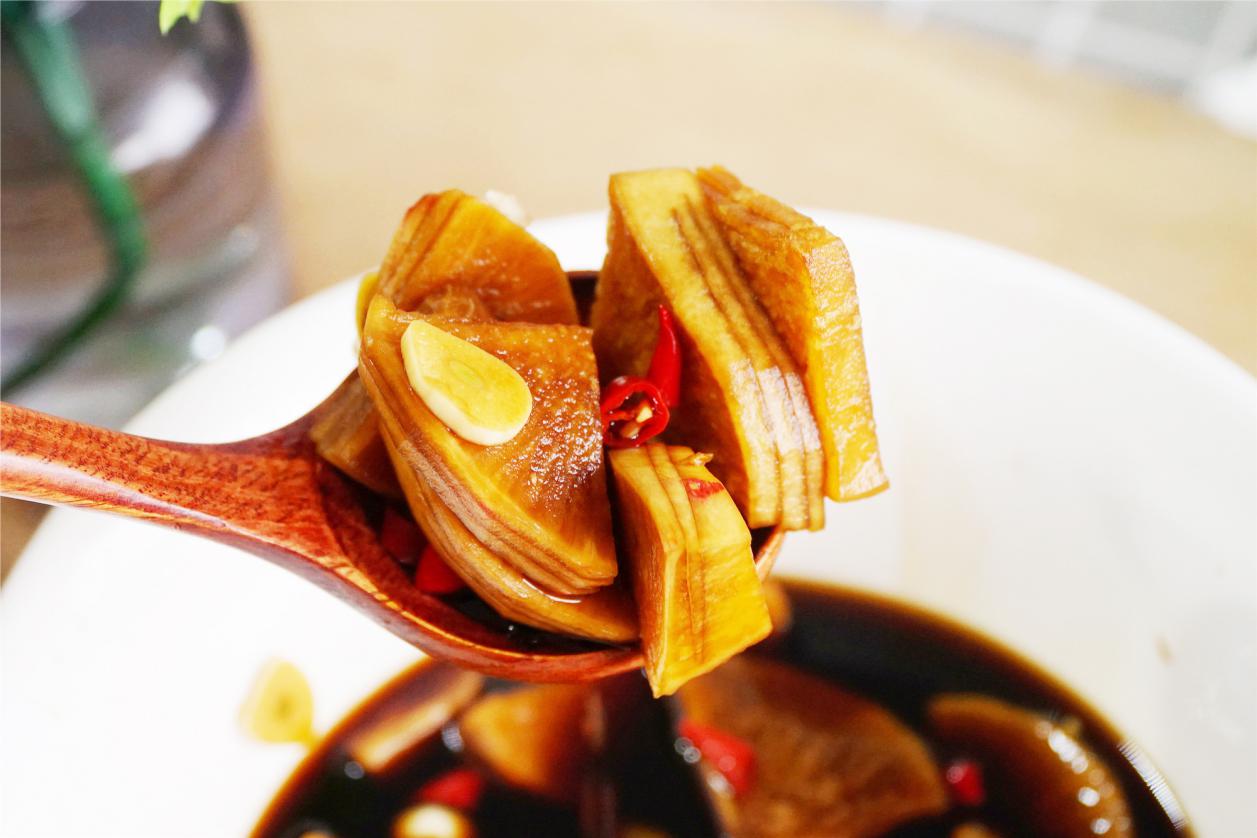

(By Mo Tingting)Soy sauce is an essential ingredient that represents the wisdom of our ancestors, imparting flavor to food that can uplift the inner self and connect one with the past, present and future. Since the discovery of soy sauce, the production methods have evolved with the times. With that, a whole new array of flavors, ingredients, and uses have been created to suit the palettes of consumers worldwide. Indeed, soy sauce remains a timeless seasoning in many cuisines. Food saturated in soy sauce is a hallmark of Chinese cooking, whether it’s stewed, simmered, sau

The “living fossil” of the Chinese brewing industry
Soy sauce, a seasoning agent with salty taste and distinct aroma suggestive of meat extracts, was originated in China 2,800 years ago and spread throughout Asia. Soy sauce is traditionally made using salt, water, soybeans, and wheat. The soybeans are first steamed and the wheat toasted to provide the major foundations for soy sauce flavor. The treated ingredients are crushed, boiled and mashed together in equal proportions with water, cooled down to about 80℃, then inoculated with a special edible filamentous mold known as koji. Koji is composed primarily of Aspergillus oryzae, but most koji contains some amount of other benign molds that add distinctive flavors to the soy sauce as well. The koji releases a suite of protease and amylase enzymes into the raw material mixture.

The mixture is fermented between three to seven days in the dark inside large wooden vats. After the initial fermentation, the koji mixture is combined with water and salt, and further fermented with lactic acid bacteria and yeast to form a moromi, or solid-state mash, for several months. The secondary fermentation process forms hundreds of flavor molecules found in soy sauce.
Once you enter a soy sauce factory, you can see in the antique open-air drying ground, there are many large sauce jars with sauce. You can smell a special flavor of soy sauce in the garden. These jars are “old soup bottom” handed down from generation to generation, the oldest one may have been for hundreds of years. These large sauce jars may have been repaired several times outside the traces, inside the different depth of the sauce lines are silently telling their long history of brewing.
The time-honored brand still follows an old-fashioned way
A bottle of 500ml Qianwanlong soy sauce is unexpectedly priced at RMB 40 yuan. Why is it so expensive?
Qianwanlong soy sauce, known as a famous old brand of naturally fermented Shanghai soy sauce, is an ancient local traditional handicraft technology. In 2008, the Qianwanlong soy sauce-making process was selected into the second batch of national intangible cultural heritage list — the only one in the industry. It is believed to be one of the few companies in China that still make soy sauce in the traditional and old-fashioned way. The sauce is thick with a reddish-brown color, and is considered an indispensable ingredient for making master dishes. Qianwanlong adheres to the traditional production process. Today, it still uses only 300 jars for soybean fermentation leading to limited production and high price.

Qian Jinnan, the founder of Qianwanlong Sauce Garden, was a famous gentleman in Fengnanchuan County at that time. Relying on the official power of friends, he set up a “Bandung Sauce Garden” in Shanghai. Because of its good management, prosperous business and good reputation, three golden characters of “Guan Sauce Garden” were inscribed on the Qinglong signboard issued by Yamen, Jiangsu and Zhejiang Provinces in that year. In March 1983, it was the first time that soy sauce was exported to foreign countries, which pioneered the export of soy sauce in Shanghai. It has been exported to more than 10 countries and regions and is welcomed by customers after it is put into the market.
For more than 100 years, Qianwanlong has been living and developing in the original sauce garden site, and traditional handicraft techniques have been handed down from generation to generation. Traditionally, the techniques are: beating with sticks, steaming with earth stoves, pressing residue on wooden frames, self-testing of soy sauce color, tasting with salty and light mouths, fermenting, drying and storing in soy sauce jars, and shoulder-to-shoulder picking of oil output and delivery. The main raw materials are soybeans and flour. The facility only has simple tools such as bamboo plaque, bamboo groove, cylinder, wood press and so on. Once the fermentation process is completed, the mixture is put through a traditional wooden press. Amazingly, their annual production of 100,000 bottles is made with the help of just such an ancient device.
After years of development, Qianwanlong soy sauce has developed 16 series of products, such as red brewing soy sauce, red original juice, special brewing and fine wine. Its soy sauce brewing technology has been continuously studied for three generations. By the early years of the Republic of China, it had produced “sunshine street oil” and “sunshine sanitary oil”. The former had to be exposed to sunshine for three days in a vat, sunshine at night, roll and foam, and the production cycle lasted for two years before it could be brewed. Special sun-dried soy sauce has red-brown color, rich soy sauce fragrance, mellow body and long storage.

Just like aged balsamic vinegar, traditionally produced soy sauce products are more expensive than the standardized industrial versions sold in supermarkets all around the world, but the taste, health and cultural benefits definitely make the price tag worth it. Today their production is extremely sought after and they have opened a restaurant featuring Shanghai’s traditional soy sauce-based dishes. It is hoped that it will encourage more similar productions, allowing more people to experience the joy of real soy sauce.
Tips:
1. When selecting beans, the orders are to “look, remember, smell, touch and taste”. The beans are soaked in water and then stewed in an earthen oven. Different seasons require different temperatures and soaking times.
2. The essence of brewing technology is “good material, excellent koji, fine art and sun-drying”. The key techniques are “eyes, mind, hand grinding, nose sniffing and oral examination”.
3. Qianwanlong soy sauce cannot be found in ordinary supermarkets, and must be purchased directly from Qianwanlong Sauce Factory. The factory is located at No. 318 Gaoxiangring Road, Gaodong Town, Pudong New Area, Shanghai, China.
Source: China-ASEAN Panorama
桂ICP备14000177号 Copyright@2006-2013 Guangxi China-ASEAN Panorama Magazine Agency Co., Ltd. All Rights Reserved